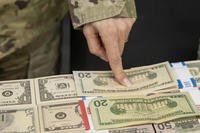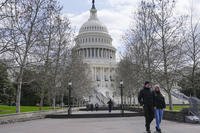Today, I would like to express my love of overdraft protection. It is a wonderful thing that can save you money and aggravation during those times when life gets out of hand, or if you make a math error, or of something else unexpected occurs. As with any useful too, it has the potential to be negative if used incorrectly. It is important to completely understand your account's overdraft protection and how it works in order to make sure that you are getting the benefits without the potential downsides.
What is overdraft protection?
Overdraft protection is a general term used to describe any type of arrangement whereby your bank or credit union will pay a check, debit transaction, etc., even if there is not enough money in your account. In my definition, overdraft protection is an account you have established to ensure that you will not overdraft your account, even if you make a math error or other mistake.
How do you get overdraft protection?
Most banks and credit unions offer some sort of overdraft protection plan. The most common is a line of credit that is attached to your checking account. In a good overdraft protection account, you only pay interest on the money that you borrow. You don't want to be paying additional fees for this service. You can also use linking accounts that will pull money from another account if one account becomes overdrawn. Check your bank or credit union's website or call for more details about the type of coverage they offer and the fees associated with coverage.
Why do you want overdraft protection?
An Non-Sufficient Funds (NSF) or "bounced check" fee can be expensive, typically in the $25 to $40 range. In addition, you'll get an NSF fee on every transaction that presents when there isn't enough money in your account. It is very easy to make a mistake balancing your account, or do something silly like use the wrong account to pay a bill. In addition, sometimes life gets hectic. Having affordable overdraft protection helps save money when you haven't had a minute to balance your account. Overdraft protection can also help prevent NSF messes due to:
- merchant errors
- fraud
- transaction holds
- unexpected electronic transactions
- identity theft
- deposit holds
- returned deposits
- bank errors
In addition, having overdraft protection can help provide flexibility in times of stress. For example, one time I had to leave home unexpectedly to attend a funeral. Because we have overdraft protection, I was able to tell my husband not to worry and to write checks as necessary in my absence. I knew that I would be able to quickly and easily "clean up" any banking mess upon my return.
What should you look for in overdraft protection?
Many banks charge a fee each time you use the overdraft protection coverage on your account. This is not a good account for you! If your bank or credit union charges a large fee each time you use your overdraft protection, look for a different financial institution. You want a no-fee, interest-only overdraft protection account. In addition, be sure that your overdraft account has a limit large enough to pay your biggest imaginable bill.
Can things go wrong with overdraft protection?
Yes, absolutely! First, you need to make sure that you have enough coverage for any NSFs that might occur. For example, my checking account had a $2,000 overdraft line-of-credit that I set up when I opened the account. At that time, way back in the dark ages, $2,000 was more than my husband and I made in a month, and much larger than any bill we'd ever paid. Twenty years later, $2,000 is relatively less money. I failed to increase the amount of overdraft protection on our account. Then, we had our house painted and I could not find the right checkbook when it was time to pay the bill. I grabbed the checkbook available and wrote the check, fully intending to move the money to the right account immediately. And I forgot. And bounced my first check in well over a decade. It was so irritating because I had the money, and I had overdraft protection, but I still messed it up.
Also, you need to make absolutely sure not to use your overdraft protection as more spending money. I made this mistake in college. I had $500 in overdraft protection, so I figured that I could just use that like an extra $500 in my checking account. Bad idea. Now, I basically had no overdraft protection, plus I was paying payments on that overdraft protection each month. It was like having a loan, but with variable payments that came right out of your account when you weren't paying attention. Do not do this!
Finding and opening the right overdraft protection is a good investment of time. It will prevent NSF fees and will help you to feel less stressed. It will also keep your bank accounts in good standing. Take some time to set up the right overdraft protection today.
Caveat Emptor: As you can see, I have had good experiences with my overdraft protection. However, so many customers have had negative experiences with bad overdraft protection schemes that 2010 legislation targeted certain overdraft-related banking practices, and in 2012 the Consumer Financial Protection Board conducted additional investigation into certain overdraft-related bank policies. You must be a smart consumer and only use the right overdraft tools for your situation.








